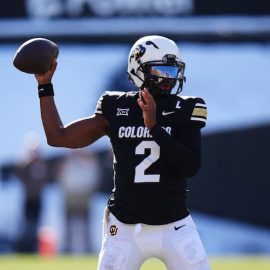Yesterday, UEFA revealed the draw seedings for Euro 2008’s final tournament. The 16 qualified teams have been separated into 4 different pots, which will be utilized to determine the 4 groups of the tournament by drawing one team from each pot.
With the two co-host nations (Austria/Switzerland) already occupying positions A1 and B1 in the draw, Pot 1 will be formed by European champions Greece, and the team with the highest UEFA coefficient from the 2006 World Cup and Euro 2008 qualifying, in this case the Netherlands. The remaining pots have been filled in order of coefficient. The teams in Pot 2 will be Croatia, world champions Italy, the Czech Republic and Sweden, while Romania, Germany, Portugal and Spain will occupy Pot 3. Finally, Pot 4 contains Euro championship newcomers Poland, as well as France, Turkey and Russia.
.
| Switzerland (hosts) | |||
| Austria (hosts) | |||
| Greece (holders) | |||
| Netherlands | |||
|
|
|||
| Croatia | |||
| Italy | |||
| Czech Republic | |||
| Sweden | |||
|
|
|||
| Romania | |||
| Germany | |||
| Portugal | |||
| Spain | |||
|
|
|||
| Poland | |||
| France | |||
| Turkey | |||
| Russia | |||
UEFA’s seedings give rise to interesting scenarios. Namely a “group of death” could potentially contain Netherlands, Italy, Germany, and France, while a “relatively easy” group could include Austria, Croatia, Romania, and Poland.
“The system is based on the results of the qualifying competitions — a cycle of two competitions, that is to say one EURO qualifying competition and one World Cup qualifying competition“, explained UEFA’s professional football director Giorgio Marchetti.
“The coefficients are drawn up by dividing the total number of points earned by each team during the two qualifying competitions by the number of matches played. From this point of view, the system is simple, transparent and objective, there is no interference. In the case that teams have the same coefficient over the two qualifying competitions —which is the case for Romania and Germany, and Turkey and Russia— we apply the coefficient over the last competition (note: Euro 2004), the average goal difference of the last competition, the average number of goals scored, average number of away goals scored and finally, if everything is still equal, we would draw lots” concluded Marchetti.
UEFA’s football director added that “the UEFA ranking has been constantly and consistently applied in this way over the past few editions of the European Championship, but noted that a UEFA review of its coefficient ranking system is under way, for future Euro competitions.
The draw will take place on December 2 at 12:00pm local time, in Lucerne, Switzerland.
Marco Pantanella writes for the mCalcio blog
Add Sportslens to your Google News Feed!






